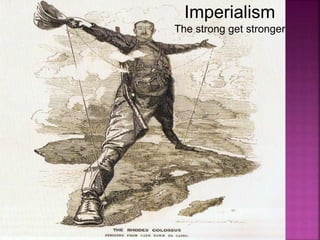Imperialism involved stronger nations dominating weaker countries politically, economically, and socially through colonialism, spheres of influence, and protectorates. There were several types and causes of imperialism in the 19th century, including seeking new markets and resources, civilizing missions, and Social Darwinism. European imperialism resulted in the colonization and exploitation of much of Asia and Africa during this period.
















































